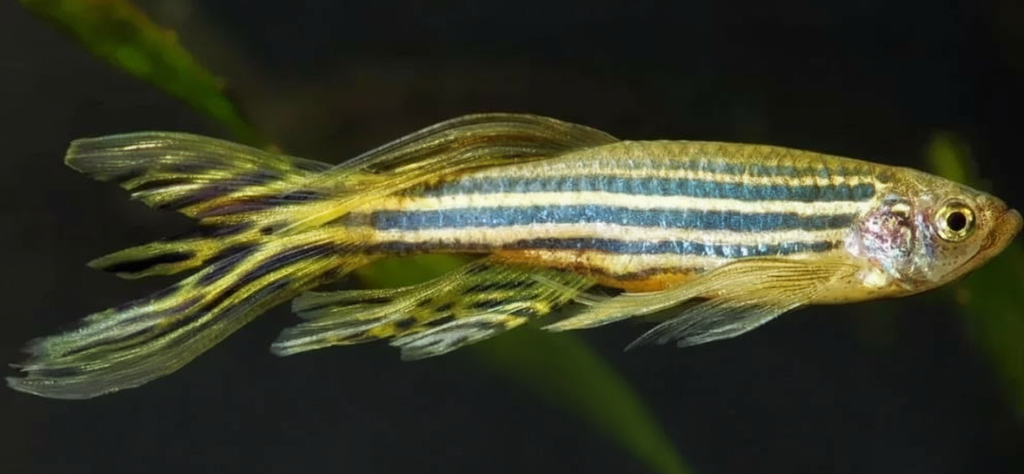The Role of Specialized Housing Systems in Successful Zebra Danio Breeding

Zebra Danios (Danio rerio) are among the most commonly used freshwater fish in aquaculture, scientific research, and the aquarium trade. Their vibrant colors, small size, transparent eggs, and hardy nature make them an attractive choice for breeding in both research settings and home aquariums. However, to ensure successful breeding, specialized housing systems are essential. These systems provide the optimal conditions necessary for the health and well-being of the fish, while also facilitating efficient breeding practices.
Let’s explore the role of specialized housing systems in Zebra Danio breeding. We’ll cover the importance of water quality, environmental conditions, and the physical design of the housing systems. Additionally, we’ll discuss the specific needs of Zebra Danios throughout their life cycle and how a carefully designed housing system can enhance breeding outcomes.
Understanding Zebra Danios and Their Breeding Needs
Zebra Danios are small, tropical fish native to the streams of India, Nepal, and Bangladesh. These fish are incredibly adaptable, capable of thriving in a variety of environments. In captivity, they are often housed in freshwater tanks with stable temperatures ranging from 25-28°C (77-82°F). They are known for their active and social nature, and as such, they require plenty of space to move and interact with one another.
For successful breeding, several environmental factors need to be carefully controlled. These factors include:
- Water Quality: Zebra Danios are sensitive to fluctuations in water conditions, particularly in terms of pH, hardness, and cleanliness.
- Water Temperature: Maintaining a stable and warm temperature is crucial for encouraging breeding.
- Lighting Conditions: Zebra Danios breed more readily in well-lit environments, with light cycles simulating natural day/night patterns.
- Tank Design and Space: The layout of the tank must allow for easy interaction, adequate hiding spots, and sufficient swimming space for the fish.
In addition to these environmental factors, specialized housing systems can also help manage the breeding process itself. This includes creating conditions that mimic the fish’s natural habitat and ensuring that breeding takes place in a controlled, stress-free environment.
Water Quality and Filtration Systems
Water quality is arguably the most important factor in successful Zebra Danio breeding. Poor water quality can lead to stress, disease, and ultimately unsuccessful breeding attempts. Therefore, specialized housing systems for breeding Zebra Danios must incorporate advanced filtration systems to maintain clean water.
- Filtration: The use of mechanical and biological filtration systems ensures the removal of excess waste, uneaten food, and harmful nitrogenous waste from the water. Filtration not only keeps the water clean but also provides a stable environment for the fish to thrive.
- pH and Hardness Control: Zebra Danios prefer slightly alkaline water, with a pH range of 7.0 to 8.0. The hardness of the water is also crucial, as overly soft or hard water can interfere with breeding. Specialized housing systems can include pH and hardness regulators to ensure that these parameters remain within the ideal range.
- Temperature Control: Since Zebra Danios breed best in warmer water, specialized housing systems often feature built-in heaters to maintain a consistent temperature. A temperature range of 25-28°C (77-82°F) is optimal for breeding. Heating elements should be reliable and evenly distribute warmth throughout the tank to prevent temperature fluctuations, which could stress the fish.
Tank Layout and Space
Zebra Danios are active swimmers that require ample space to roam. While small tanks can work for single pairs of fish or juvenile fish, breeding systems typically require larger tanks that provide plenty of room for the adults to swim, socialize, and exhibit courtship behaviors. A spacious tank with a well-thought-out layout encourages natural behaviors, which is essential for breeding success.
- Hiding Spots and Substrate: Breeding tanks often incorporate fine gravel or a soft substrate on the bottom to provide a natural surface for the eggs to be laid. The inclusion of aquatic plants or breeding mats can also provide hiding spots for the fish and a safe place for eggs to settle. This helps to ensure the survival of the eggs after fertilization.
- Breeding Surfaces: Some specialized housing systems feature built-in breeding surfaces, such as mesh or foam pads, which allow the fish to deposit their eggs in a secure location. These breeding surfaces help prevent the eggs from being eaten by the adults, which is common in non-specialized tanks.
- Breeding Chambers or Dividers: In some breeding systems, separate chambers or dividers can be used to separate the adult fish from the eggs after fertilization. This ensures that the parents do not eat the eggs and allows the young fry to develop in a safer, more controlled environment.
Water Movement and Oxygenation
Water movement is another key consideration for Zebra Danio breeding. While Zebra Danios are found in slow-moving waters in the wild, they still benefit from gentle water movement in their tank. Specialized housing systems for breeding often include adjustable water pumps or gentle air stones to promote water circulation and oxygenation. This ensures that the water is constantly moving, preventing the buildup of harmful waste products and promoting healthy gill function in the fish.
Proper aeration is crucial for the oxygen needs of the fish, especially during breeding. Fry and eggs also require well-oxygenated water to ensure healthy development. A gentle current allows for optimal gas exchange without disturbing delicate eggs or fry.
Monitoring and Control Systems
To ensure the health and safety of the Zebra Danios during the breeding process, many specialized housing systems incorporate monitoring and control features. These include temperature sensors, pH monitors, and automated lighting systems, all of which contribute to creating a stable and controlled environment.
- Automated Monitoring: Systems with automated monitoring features can continuously track water parameters such as temperature, pH, and conductivity levels, alerting the breeder to any potential issues before they affect the fish. Some systems even allow for remote monitoring, making it easier for breeders to manage their tanks efficiently.
- Water Testing Equipment: Regular water testing is essential for maintaining optimal conditions in a breeding system. Specialized housing systems for Zebra Danios can include built-in testing equipment, making it easier for breeders to keep track of essential water quality parameters.
The Role of Specialized Housing in Fry Care
Once the eggs have been fertilized and hatched, the care of the fry is critical to their survival and growth. Specialized housing systems designed for Zebra Danio breeding often include features that assist with the care of fry.
- Separate Fry Chambers: Many breeding systems are designed with separate fry chambers or nurseries where the newly hatched fry can grow in a safe environment away from adult fish. This is particularly important as adult Zebra Danios are known to eat their own fry.
- Gentle Water Flow: In fry chambers, gentle water flow and well-oxygenated water are essential to support healthy development. Specialized systems often include air stones or gentle filtration to ensure the water remains clean and oxygenated without disturbing the fry.
- Feeding and Nutrition: Specialized housing systems may also incorporate automated feeding systems that ensure the fry receive the appropriate food in the right amounts. Fry require different types of food than adult fish, including live or finely crushed food, and specialized systems can ensure the fry receive the necessary nutrition for optimal growth.
Conclusion
The role of specialized housing systems in Zebra Danio breeding cannot be overstated. These systems create the optimal conditions for the fish, from water quality and temperature control to proper lighting and tank layout. They also help manage the breeding process itself, providing the necessary environment for successful fertilization and fry care. Investing in a specialized breeding system for Zebra Danios not only improves breeding success but also supports the overall health and well-being of the fish. Whether you’re breeding Zebra Danios for research, aquarium displays, or personal enjoyment, creating a controlled and stress-free environment will help ensure the best outcomes for both the fish and the breeder.
FAQ
Q1: What is the ideal tank setup for Zebra Danio breeding?
A1: A spacious tank with gentle water flow, stable temperature (25–28°C), and breeding surfaces ensures successful Zebra Danio breeding.
Q2: Why use specialized housing systems for Zebra Danios?
A2: Specialized systems provide controlled conditions, automated feeding, and fry chambers, improving breeding efficiency and fish health.
Q3: What water parameters are best for Zebra Danio breeding?
A3: Maintain pH between 7.0–8.0, temperature around 25–28°C, and proper oxygenation for optimal breeding results.



